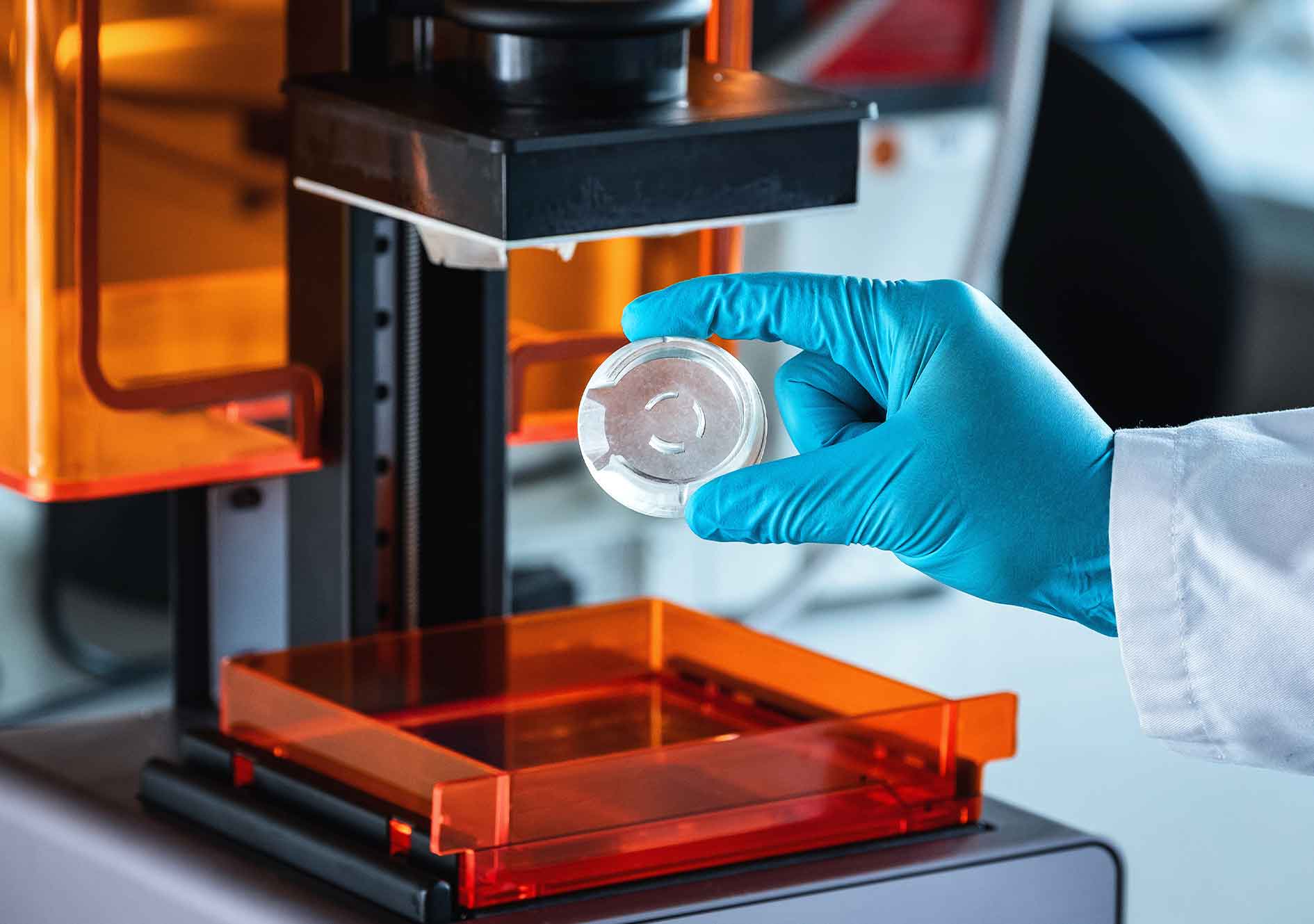Personalized medicine: 3D printing enables tissue with customized shape
In the case of serious soft tissue injuries, tissue transplantation is sometimes unavoidable. For the patient, however, this means a serious intervention. In the future, the missing tissue could grow directly in the patient's body - in isolation chambers that can be implanted under the skin and individually adapted to the wound geometry. The 3D-printed chambers were developed by the research team from the Fraunhofer Institutes for Applied Polymer Research IAP and for Laser Technology ILT as well as the BG Klinik Ludwigshafen.

If structures such as bones, vessels or tendons are exposed in the patient, tissue transplantation with perfused tissue is often the only option. For the patient, this is associated with an operation lasting several hours and with injury to the body's own healthy tissue. Scientists are therefore developing tissue-conserving methods for generating perfused tissue grafts to replace skin and other tissue in a targeted manner. For example, collagen-lined isolation chambers made of teflon could be sewn under the skin and an artery or vein could be looped into them. Through cell migration and ingrowth of vessels, the collagen is finally transformed into transplantable tissue within two to four weeks. This is a minor procedure for which local anesthesia is sufficient. In contrast to tissue grown in a petri dish, the tissue created in the chamber is fully vascularized - i.e., interspersed with capillaries - and thus supplied with blood. This means that a lively connective tissue is created that adopts the shape of the isolation chamber and is suitable for transplantation without having to sacrifice healthy donor tissue. Another advantage: since the tissue is produced by the patient's body, rejection reactions are avoided.
Customizable tissue engineering
Researchers at the Fraunhofer IAP are currently evaluating and optimizing this technique in the BMBF-funded FlexLoop project (grant number 03VP05962) - together with the Fraunhofer ILT and the BG Klinik Ludwigshafen - Clinic for Plastic and Reconstructive Surgery at Heidelberg University. "Whereas previously only round isolation chambers were used for tissue engineering, for the first time we can adapt the shape of the isolation chambers to the shape of the patient's soft tissue defect, thus further advancing the personalization and individualization of medicine," says Dr. Wolfdietrich Meyer, project manager at Fraunhofer IAP. This is enabled by 3D printing, which is intended to replace the previous milling of the chambers. Since the conventional chamber material Teflon cannot be printed, the experts at Fraunhofer ILT are relying on photo resins for this purpose. "3D printing not only offers the advantage of being able to specify the shape of the tissue, we have also developed chamber designs that make tissue cultivation as comfortable as possible for patients and allow easy handling during surgery," explains Andreas Hoffmann, project manager at Fraunhofer ILT.
The researchers at the Fraunhofer IAP are testing both the material itself and the differently shaped isolation chambers. Finally, the isolation chamber must not release any degradation products into the patient's body or lead to rejection reactions, so it must be biocompatible. How durable is the material in the human organism? Does it change, for example, when it is brought to body temperature? The initial results look promising. As far as the entire isolation chambers are concerned, the mechanical properties are the main focus. This is because the chambers are sutured to the surrounding tissue or implanted under the skin at a site close to the defect: Here, for example, no cracks may form in the chamber for safe application.
The physicians at BG Klinik Ludwigshafen, in turn, are investigating whether the regrowing tissue can also completely fill complexly shaped isolation chambers. "Our main aim is to show that we can grow shapable tissue in the 3D-printed chambers, which in turn - like a kind of puzzle piece - can completely close a complex soft tissue defect. In addition, the biomechanical quality of the tissue grown is closely examined," explains Dr. med. Florian Falkner, assistant physician for plastic and reconstructive surgery at BG Klinik Ludwigshafen. However, it will take a few more years of development before this form of tissue cultivation is ready for clinical application as a routine procedure.
Last modified: